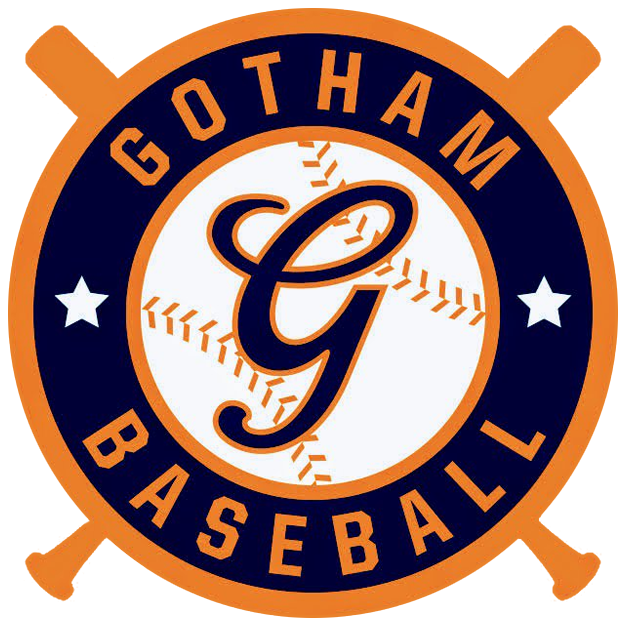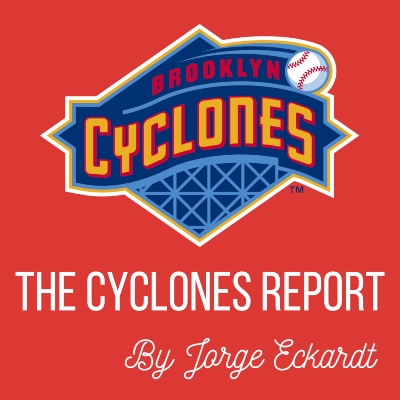The minor leagues have long been a testing ground for rules that Major League Baseball is considering instituting. This season in High-A, where the Cyclones play, it has been especially prevalent.
The most notable of the rules is the pitch clock, but pitcher step-offs are limited, the bases are slightly larger and shifts are restricted. Robo umps are also being tested at some levels, but not High-A.
Here’s what some Cyclones players and coaches had to say about each of them.
The pitch clock
A real subject of debate for a long time, the pitch clock has garnered mostly positive responses this year. Both players and staff have remarked on how much shorter the games are now that so much “dead time” has been cut out.
The times vary slightly across the different levels, but at High-A pitchers have 14 seconds with no one on base and 18 seconds with runners on.

Luis Rivera, manager of the Cyclones, said he likes the rule.
“The pitch clock makes everybody be more engaged, efficient, the games go faster and you’ve got to be ready to play,” Rivera said.
Rivera did say that some of the players don’t like it because it causes them to rush, but that it’s up to them as professionals to make adjustments. Ultimately, he said he believes it is good for baseball.
Pitching coach A.J. Sager echoed Rivera, saying that every once in a while a pitcher will feel rushed because of the clock, but that it moves the game along.
“It’s kept the tempo,” Sager said. “From a coaching standpoint, I like it because we’re always preaching tempo. Sometimes [before the pitch clock] guys take too long out there and then your fielders start to fall asleep a little bit on you.”
He said he’s in favor of it, and he believes that most people in the field are as well. Sager said what they’ve been coaching is that as long as a pitcher doesn’t waste any time getting on the mound, then they’ll be fine and won’t have to rush.
“Where it becomes a factor is if you’re taking too long to get back up on the mound and then once you’re ready to throw your pitch, now you have to rush that process,” Sager said. “So we’re just trying to get them to flush the last pitch, get on the mound and get ready to go.”
Grant Hartwig, who pitched in 11 games for Brooklyn before just recently being promoted to Double-A, said it hasn’t changed much for him while pitching because he always likes to work quickly anyway.
For him, the biggest impact it’s had has been the length of the games.
“We play a long season, [132 games], and being able to sit out here for two and a half hours every night versus four hours every night, I think it’s a big help,” Hartwig said. “Not just for the game being able to move faster for the fans, it’s also better for us, honestly, because it’s not having those long, grueling nights and having to come to the field every single day after that.”
While there was an adjustment period, Sager said he believes most of it came in spring training. Once the season actually started the Cyclones had far fewer violations than he anticipated, a result of them preparing for it so much beforehand.
When issues do come up, Sager said, it’s primarily mental, particularly when trying to adjust to it early on.
“I do think the visual of just seeing that thing counting down, you can see it kind of in your peripheral … that probably as much as anything is just something that’s new to you and complicates your attention in a negative way early,” Sager said.
After Jordan Yamamoto was in Brooklyn earlier in the season making his first start coming back from injury, he said he was thinking about the pitch clock often while out there.
“I was thinking about that often,” Yamamoto said. “Am I going too slow? Am I going too fast? And then I realized I was going way too fast.”
Michael Krauza, who the Mets signed out of independent ball a few weeks ago, struggled with the mental side of it as well. He made his affiliated baseball debut with the Cyclones at the beginning of July, and now is pitching for St. Lucie. He said he was staring at the clock every night leading up to his first appearance and was even practicing pitching with it with his parents on the phone.
“My mom was counting from 14 down, and so I was trying to get that down,” Krauza said. “And today I think I looked up at least once, and I was set and there were two seconds and I was like ‘oh no’ so I just immediately threw the pitch.”
Krauza though, like the rest, was also impressed by how much quicker the games were compared to before.
“I get the allure to it, but it’s just something you gotta get used to,” Krauza said.
The step-off rule
Probably the most unpopular of the new rules has been the one limiting the number of times a pitcher can attempt a pickoff during a plate appearance.
By rule, the pitcher is allowed two pick-off attempts or step-offs during a single plate appearance. If a pitcher attempts a third pickoff and does not get the runner out, the runner advances a base automatically.
Sager said he believes this rule, more than some of the others, favors the offense. However, he said as a team they haven’t had many issues with it, and as long as pitchers get on the mound, there are things they can still do to be effective.
“You can hold the ball, you can vary your times, that’s what we’ve been trying to preach prior to the pitch clock,” Sager said. “So in some ways, I think from a coaching standpoint, it’s almost forced players to do the things you’ve been asking them to do for a little while anyway.”
Hartwig said this was the rule change that he liked the least. He said he does his best to stay away from it, but that it can have a real impact late in games.
“When it gets to crunch time at the end of the games, say there’s the winning run on first base, and he’s a base stealer, I think that’s where it becomes very difficult for pitchers as well, especially working with the clock trying to hold the runners,” Hartwig said.
Rivera also said he doesn’t like this rule, but like Sager, hasn’t noticed it really impacting the game too much.
“You should be able to do whatever you want to win the game, and limiting that, I don’t agree with that,” Rivera said. “But that’s the rule, we’ve got to make adjustments.”
Defensive shift limitations
Maybe the hottest topic in baseball over the last handful of years has been how defensive shifts are becoming more and more prevalent. Fans and players alike are divided over it.
In a precursor to what’s likely to come in MLB, teams in Double-A, High-A and Low-A are required to have a minimum of four players on the infield at once, with two on each side of the second base bag. That means no more shifts with three infielders stacked on one side of second, including the infamous shift against a lefty that had an infielder standing about 20 feet into right field.

Rivera said he isn’t a fan of this rule either, for largely the same reason he isn’t a fan of the step-off rule — a team should do whatever they want to try to win the game. He loves the shift.
“It’s good, you steal a lot of hits,” Rivera said. “I know hitters sometimes, they get upset, but you’ve gotta make adjustments, everybody’s gotta make adjustments. Life is about adjustments, this job baseball is about adjustments.”
Hartwig on the other hand said he was indifferent about the rule, and that he actually notices when the shift costs you more than when it helps you.
“I mean, as a pitcher, you don’t really remember all the times that a guy rolls over into the shift, you remember the few times where he beats it with a cue ball down the third baseline or vice versa,” Hartwig said. “So as pitchers I feel like we don’t realize it as much, and quite honestly, I think it’s not really that big of a difference for me.”
Larger bases
Yes, after all these years, the size of the bases is changing (excluding home plate, of course). They will now be 18-inches, an increase from 15-inches.
The response from the Cyclones has been very positive.
Hartwig said he thinks the new bases are awesome, even if he doesn’t notice it much as a pitcher. It’s most in play for him when going to cover first base, when both the pitcher and runner are running toward the same spot. In those cases, he said the larger bases make it safer to do so.
“I feel like it doesn’t really change much about the game, and I think it just helps everybody,” Hartwig said.
The same sentiment was shared by Rivera, who also said he loves it. He said the new bases are softer and help prevent injuries, whereas the old ones were harder and could get slippery.
Injury prevention is one of the main reasons these bases have been introduced. The league said there was “a decrease in the severity of base-related injuries,” when it was introduced in Triple-A and the Arizona Fall League in 2021, an MLB.com article reported.
The other reason is it could lead to a slight increase in action, seeing as the distance between the bases will be slightly reduced. That could lead to more stolen base and bunt attempts.
“Baseball is trying really hard to make the game more exciting, get more action into the game, and I’m in favor of that too just like most fans I’m sure are,” Sager said.
Robo umps
This rule isn’t active in High-A yet, but it could be on the way in the coming seasons. This season, the ABS (Automatic Ball/Strike System) is active in Triple-A and Low-A.
Both Rivera and Sager said they haven’t played with it yet so they don’t have an opinion, but they have heard from other people who have that it’s not bad, or better than expected.
However, Hartwig started the 2022 season in Low-A, so he already had experience with it by the time he got to Brooklyn. He said they used different forms of umpiring on different days of the week.
“On Tuesday, we would have the umpire alone, doing the game old-fashioned by himself,” Hartwig said. “And then I believe Wednesday and Thursday, were completely robot umps, or the ABS. … And then on the weekends, we did regular strike zone called by the umpire, and then you had three challenges throughout the game.”
When it was completely ABS, Hartwig said games were a lot quieter because the dugouts weren’t going back and forth arguing pitches anymore.
“It takes a little bit of smaller stuff away from the game, having chat going back and forth, where everything’s a little bit more fun,” Hartwig said.
On the days when the challenge rules were active, Hartwig said the challenges had to be immediate. Nothing could come from the dugout, it can only come from the pitcher, catcher, or batter. If the challenge succeeded, the team gets it back.
That, Hartwig said, he loved. It’s quick, as all that’s required is a point to the press box for the call. No long replay delays, one of the biggest issues with MLB’s current replay system.
He said he believes this is the future of baseball.
“It’s quick. It works. It’s effective. And I think it moves the game along and everybody’s better for it. So I think that’s something that should be adopted, in my opinion.”


